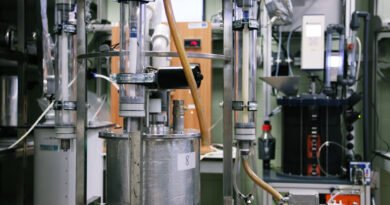World trade is recovering along with industrial production
According to the European Central Bank’s Economic Bulletin (2021/02), the economies of the various sectors in eurozone countries are still uneven, with the services sector being more affected by measures to restrict social contacts and mobility than the industrial sector, which is recovering faster.
Although measures to limit the spread of the coronavirus have had a particularly severe impact on leisure services, the contraction in manufacturing has been largely driven by external factors. Although the first quarantine measures also had an impact on production capacity, the average impact of measures to limit the spread of the virus on production in 2020 was relatively small, as activity in this sector was largely driven by changes in foreign demand. The high elasticity of manufacturing to foreign demand reflects the high level of openness of the sector to international trade. This suggests that disrupted global supply chains in the early stages of a pandemic lead to additional costs. These results also explain the further context of the sector’s full recovery: in the second half of 2020 international trade grew rapidly.
The recovery in world trade has been dynamic as trade in goods has recovered rapidly along with global industrial production.
With a slight decrease in production in the fourth quarter of 2020, economic activity in the eurozone is expected to remain subdued in the first quarter of 2021. After 12.5% growth in the third quarter of 2020, real GDP contracted by 0.7% in Q4, compared to previous one. However, this was a better result than the expected 2.2% contraction based on Eurosystem staff macroeconomic projections in 2020 December.
The decline in output in the fourth quarter was mainly driven by declining domestic demand and, in particular, private consumption. Although output remained almost 5% lower in the fourth quarter than in the year before the pandemic, the better-than-expected results for that quarter had a positive impact on the 2.2% growth rate in 2021.
Output figures for the fourth quarter varied widely by sector. Although the value added of the services sector declined significantly, the volume of the industrial sector continued to grow (excluding the construction sector). After a really strong growth in the third quarter, the recovery of industrial production in the second quarter of 2020 largely offset its sharp decline in the first half.
In recent months, business investment has been driven by strong foreign demand, as evidenced by growing industrial orders for manufacturing equipment from non-eurozone and better data of manufacturing order books for export by manufacturing companies in February. Recent survey data also confirm that in 2021 first quarter investment levels remained stable. Indeed, the growth in business confidence and production expectations in the means of production sector (especially in February) suggests that investment will grow in the coming months. The manufacturing sector is likely to remain the main driver of investment prospects.




